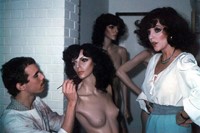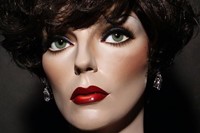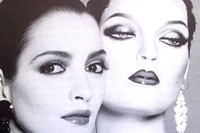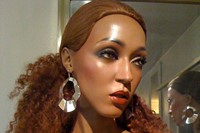Mrs Prada employed statuesque Rootstein-designed figurines to present Miu Miu Pre-Fall 2017, so we thought it an opportune moment to explore their not-so-humble origins
The Rootstein mannequin is certainly not an everyday figurine. Visual merchandisers the world over – and indeed, anyone familiar with the hauntingly life-like fashion dummies – will attest to the fact that to have a Rootstein on parade in a storefront, or in your living room as a disconcerting decorative item, is akin to parking a Rolls Royce in the driveway of your home (if inclined towards possessing objects of a vehicular nature, rather than plasticised representations of the human form).
Adel Rootstein, who was born in South Africa in 1930, founded the Rootstein mannequin company with her husband from the backroom of a Soho greengrocers, after the pair emigrated to the UK and in settled down in the midst of 1960s London. Her aim was to reinvigorate the fashion mannequin, filling “the void that had existed between fashion coverage in the international media and what actually happened in windows”. Under Rootstein’s watch, featureless figurines gazing into the retail abyss entirely devoid of pupils, their martian-like fingers pointing accusatorily at shoppers became a thing of the past: for Adel’s mannequins were – and evidently still remain, as Miuccia Prada used the Rootstein in Miu Miu’s Pre-Fall 2017 presentation – embodiments of contemporaneous trends, manifesting as three-dimensional models from the pages of a magazine, right down to the somewhat grotesque addition of facial pores.
A Shift in Shape
The era in which the Rootstein company was founded coincided with a radical and literal shift in trend: the fashionable shift dress and a craze for linear, boxy shapes bumped voluptuous silhouettes off the sartorial radar. The ample bosoms of Monroes and Mansfields, which once spilled over from sweetheart necklines, were suddenly rendered passé and replaced with waif-like androgynous figures of Twiggy, Sandie Shaw and Jean Shrimpton. One of Rootstein’s first creations was indeed The Twiggy mannequin, modelled in 1966 and introduced to the American market at the same time as Twiggy made a stateside debut herself. While Adel’s mannequins underwent some kind of frightful crash diet (Twiggy, by no fault of her own, has a lot to answer for when it comes to the way that a less than healthy BMI is a prize possession in the fashion industry), Rootstein cast them in exuberant poses – for no more were mannequins strait-laced, fashion scarecrows; they draped over shop fittings in a multitude of positions, seducing customers into stores via their new technologically advanced physiques cast in fibreglass.

Further Diversification
Prior to her death in the early 1990s, Adel Rootstein attempted to remedy the monolithic way women are represented through the industry’s unforgiving lens, creating shop mannequins that were a little more rotund and squat in appearance. Alas, their success was short-lived. This was not the first occasion where Adel attempted to pioneer diversity, however; around the same time that The Twiggy launched, the first mannequin of colour, sculpted in the likeness of model Donyale Luna, was birthed in the Rootstein factory, unfortunately meeting with a great deal of furore via the whitewashed cultural norms of the 60s. But Rootstein wasn’t deterred in her mission, and since then, countless beauties have stood before her talented squad of sculptors, from Pat Cleveland to a young Naomi Campbell and the inimitable visage of Sayoko Yamaguchi. Alongside taking a staunch position on the importance of upholding racial diversity, Rootstein also made a point of including distinct quirks in the faces and bodies of her dummies, exemplified in the Violetta Sanchez mannequin – moulded to include her subtly crooked nose untouched by the surgeon’s knife – and a middle-aged Joan Collins during her days of playing Alexis Colby in Dynasty.
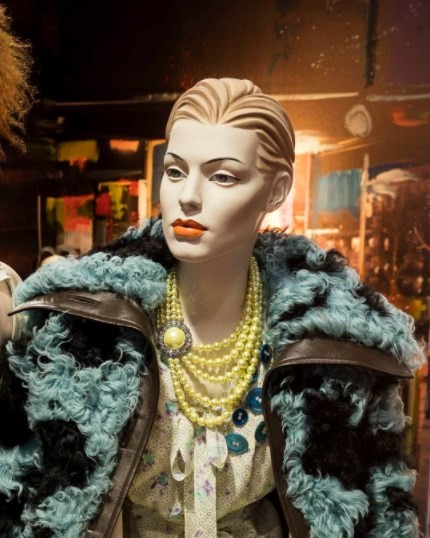
Miu Miu’s Mannequins
Prada’s little sister Miu Miu so often makes a delightful habit of riffing on trends past, amalgamating references from bygone eras through captivatingly cacophonous styling. For the Pre-Fall 2017 collection, the presentation demonstrated Mrs Prada’s penchant for the method of mish-mashing down to a T. The 1920s, 1940s and 1950s were brought together via varsity jackets paired with full skirts and bobby socks, which met with Joan Crawford-worthy tea dresses and diamanté headbands deserving of Daisy Buchanan. These intermingled looks were not presented on living breathing models, but on a harem of Rootsteins, providing an allusion to yet another era: the 1960s. But with buzz cuts, bowl cuts and slicked-back fibreglass hair painted pastel shades of pink, orange and purple, the presentation felt as contemporary as ever and thoroughly proved that the mannequin company still holds as much relevance today as ever it did.

